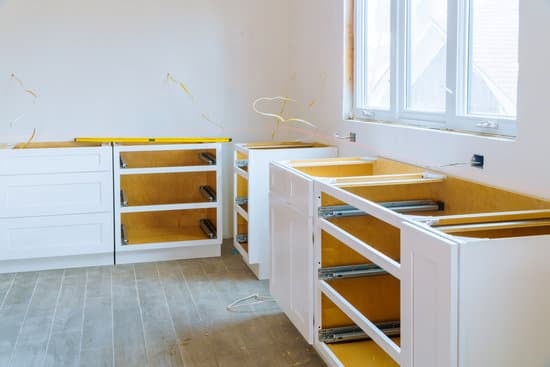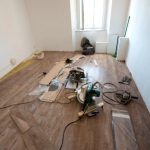Are you a homeowner looking to transform your living space without breaking the bank? If so, then DIY home improvement might be just what you need. This article will guide you through the benefits and basics of tackling various projects on your own, giving you the tools and knowledge to enhance your home while saving money.
DIY home improvement not only allows you to personalize your space according to your taste and style but also gives you a sense of accomplishment as you see your vision come to life. Whether it’s simple repairs or more complex renovations, taking charge of your own home improvements can be a rewarding experience.
Before embarking on any project, it is important to assess your home’s needs. Identifying areas for improvement will help prioritize tasks and allocate resources accordingly. Moreover, creating a budget tailored to the scope of the project is crucial in order to avoid overspending or running out of funds midway.
In this comprehensive guide, we will take you step-by-step through the process of DIY home improvement. We will provide tips on how to assess your home’s needs, create a realistic budget, gather essential tools and materials, troubleshoot challenges along the way, incorporate eco-friendly practices, and seek inspiration from online resources and influencers. Through implementing these strategies and techniques, homeowners will be empowered to successfully tackle their own home improvement projects with confidence.
Stay tuned for our next section as we delve deeper into assessing your home’s needs and identifying areas for improvement. By taking small steps towards transforming your space one project at a time, DIY home improvement can turn into an enjoyable journey that adds both value and personal touch to your beloved abode.
Assessing Your Home’s Needs
Before diving into any DIY home improvement project, it is crucial to assess the needs of your home and identify areas that require improvement. Conducting a thorough assessment will help you prioritize tasks, allocate resources, and ensure that your efforts yield maximum results. Here are some steps to follow when assessing your home’s needs:
- Visual Inspection: Start by conducting a visual inspection of your entire property, both interior and exterior. Look for obvious signs of wear and tear, damage, or outdated features. Take note of any cosmetic issues such as peeling paint, cracked tiles, or outdated fixtures.
- Functionality Assessment: Evaluate the functionality of different systems in your home such as plumbing, electrical, HVAC (heating, ventilation, and air conditioning), and structural integrity. Are there any leaks, faulty wiring, inefficient heating/cooling systems, or sagging floors? Identify areas that need attention to ensure the safety and comfort of your household.
- Prioritization: Once you have identified all the areas that need improvement, prioritize them based on urgency and importance. Some projects may require immediate attention to prevent further damage or potential hazards while others may be more aesthetic in nature. Consider factors such as budget constraints and time availability when establishing priorities.
It is helpful to document your assessment findings in a checklist or spreadsheet format so that you can refer back to it during different stages of your DIY home improvement journey. By thoroughly assessing your home’s needs upfront, you can embark on a well-informed improvement plan that caters to the specific requirements of your property.
| Area for Improvement | Average Cost |
|---|---|
| Kitchen Renovation | $25,000 – $50,000 |
| Bathroom Remodel | $10,000 – $20,000 |
| Roof Repair/Replacement | $5,000 – $15,000 |
| Exterior Painting | $2,500 – $5,000 |
| Adding Energy-Efficient Windows | $7,500 – $15,000 (for the whole house) |
Creating a Budget
When it comes to DIY home improvement projects, one of the most crucial steps is determining the scope of your project and creating a budget. Without a well-defined budget in place, it’s easy to overspend or underestimate the financial commitment required for your desired improvements. This section will guide you through the process of creating a budget and help you determine what is feasible within your financial means.
Before diving into creating a budget, it’s essential to assess your home’s needs and identify areas that require improvement (as discussed in Section 2). By conducting a thorough evaluation, you can prioritize which projects are most important and allocate your resources accordingly.
To create an accurate budget, consider the following factors:
- Material Costs: Research and estimate the cost of materials needed for your project. Take into account any discounts or sales that may be available from local hardware stores or online retailers.
- Labor Costs: If you plan on hiring professionals for certain aspects of your project, obtain multiple quotes and factor in labor costs when creating your budget.
- Permit Fees: Depending on the complexity of your project, you may need to acquire permits from local authorities. Research the associated permit fees for each improvement you plan to undertake.
- Tools and Equipment: Take inventory of the tools and equipment you already own versus what additional items you may need to purchase or rent for your project (as mentioned in Section 4).
- Contingency Fund: Leave some wiggle room in your budget by setting aside a contingency fund for unexpected expenses or surprises that may arise during your DIY endeavors (covered in Section 7).
By carefully considering these factors and doing thorough research, you can ensure that your budget accurately reflects the scope of your home improvement project.
| Factors | Considerations |
|---|---|
| Material Costs | Research and estimate the cost of materials needed for your project. |
| Labor Costs | If you plan on hiring professionals, obtain multiple quotes and factor in labor costs. |
| Permit Fees | Research associated permit fees for each improvement you plan to undertake. |
| Tools and Equipment | Take inventory of tools you already own versus what additional items you may need. |
| Contingency Fund | Set aside a contingency fund for unexpected expenses or surprises during your project. |
Essential Tools and Materials
One of the key aspects of successful DIY home improvement projects is having the right tools and materials on hand. Whether you’re a seasoned DIY enthusiast or just starting out, it’s important to have a well-stocked toolbox and access to quality materials. This section will outline some essential tools and materials that every DIY enthusiast should have.
Tools
- Measuring tape: A measuring tape is essential for taking accurate measurements of spaces and materials.
- Screwdriver set: Invest in a set of screwdrivers with various sizes and types (flathead and Phillips) to handle different types of screws.
- Hammer: A hammer is a versatile tool that can be used for tasks like driving nails, removing staples, or even light demolition work.
- Drill: A drill is useful for drilling holes into various surfaces or driving screws with ease.
- Circular saw: For cutting straight lines in wood or other materials, a circular saw comes in handy.
Materials
- Nails and screws: Keep a variety of nails and screws on hand in different sizes to accommodate different projects.
- Paint brushes and rollers: Whether you’re painting walls or furniture, having a range of paint brushes and rollers will help achieve smooth finishes.
- Sandpaper: From sanding wood surfaces to smoothing down rough edges, sandpaper is an essential material for many DIY projects.
- Tape measure: In addition to the measuring tape mentioned earlier, having a small retractable tape measure is convenient for quick measurements on the go.
By having these essential tools and materials readily available, you’ll be equipped to tackle a wide range of DIY home improvement projects with confidence. However, remember that safety should always come first; be sure to wear appropriate safety gear and follow instructions carefully when using these tools and materials.
Step-by-Step Guide
DIY home improvement projects can be a satisfying and cost-effective way to upgrade your living space. Whether you’re an experienced DIY enthusiast or just starting out, having a step-by-step guide can help ensure that your projects are successful. In this section, we will provide some helpful techniques for common home improvement projects.
Painting
One of the most common and impactful DIY home improvement projects is painting. It’s a relatively simple task that can completely transform the look and feel of a room. Here are some steps to follow:
- Clean the walls: Before you start painting, make sure to clean the walls properly. Remove any dirt, dust, or grease by using soap and water.
- Protect surfaces: Cover floors, furniture, and other surfaces with drop cloths or plastic sheets to prevent any paint spills or splatters.
- Prepare the walls: Fill any holes or cracks in the walls with spackle or putty. Sand down rough areas until they’re smooth.
- Prime the walls (if necessary): If you’re painting over a dark color or a surface with stains, it’s advisable to use primer before applying the paint.
- Paint in sections: Start by cutting in along edges and corners with a brush. Then, use a roller to cover larger areas.
- Apply multiple coats: Depending on the color and desired finish, you may need to apply two or more coats of paint. Allow each coat to dry completely before applying another one.
Flooring installation
Installing new flooring is another popular DIY project that can enhance the appearance of your home. Here’s how you can do it step by step:
- Measure and prepare: Measure the dimensions of your floor space accurately. Remove old flooring materials such as carpet or tile.
- Choose the right flooring: Select the type of flooring that suits your style and budget. Laminate, vinyl, and hardwood are among the most common options.
- Prepare the subfloor: Ensure that the subfloor is clean, level, and free of any imperfections. Repair or replace damaged areas if necessary.
- Install underlayment (if required): Some types of flooring, like laminate or vinyl, may require an underlayment for added insulation or moisture protection. Follow the manufacturer’s instructions for installation.
- Lay the flooring: Start in a corner of the room and lay out the first row of planks/tiles. Use spacers to maintain even gaps between pieces. Continue laying rows until you’ve covered the entire floor.
- Cut and trim: To fit around corners or obstacles, use a saw to cut pieces as needed. Install transition strips where the new flooring meets other types of flooring.
Installing shelving
Adding shelves to your home can provide extra storage space while also enhancing its aesthetic appeal. Here’s a step-by-step guide to installing shelving:
- Select and measure: Decide on the location and purpose of your shelves. Measure and mark where you want them to be installed.
- Find studs: Use a stud finder to locate wall studs or joists where you’ll anchor your shelf brackets securely. Mark them with a pencil.
- Install brackets: Attach shelf brackets to the marked areas using screws, ensuring they’re aligned properly and level.
- Add shelving material: Place pre-cut boards or precut shelves onto the brackets securely. Some may need screws or other hardware to secure them in place.
- Check stability: Test each shelf by applying pressure to see if it can support weight without wobbling. Adjust brackets and tighten screws if necessary.
- Style and decorate: Once your shelves are installed, you can add your favorite items or decor pieces to personalize the space.
Remember, always read and follow the manufacturer’s instructions for any specific tools or materials you’re using. Additionally, it’s important to take appropriate safety precautions and use protective equipment such as gloves, goggles, and masks when necessary. With a little patience and the right techniques, you can successfully complete various DIY home improvement projects.
Safety First
Home improvement projects can be exciting and fulfilling, but it’s important to prioritize safety throughout the entire process. Whether you’re tackling a small repair or a major renovation, following these tips will help ensure a secure DIY home improvement experience.
- Educate Yourself: Before starting any project, take the time to educate yourself on proper techniques and safety precautions. Read instructional manuals, watch tutorial videos, and consult reputable online resources to familiarize yourself with the task at hand. Understanding the steps involved and potential hazards will greatly reduce the risk of accidents.
- Use Protective Gear: Always wear appropriate protective gear when working on home improvement projects. This includes safety goggles, gloves, ear protection, and sturdy footwear. Depending on the task, you may also need respiratory masks or hard hats. Investing in high-quality protective equipment will safeguard you from injuries and potential long-term health issues.
- Work in a Well-Ventilated Area: Many home improvement tasks involve working with chemicals or generating dust particles that can be harmful if inhaled. Ensure that your work area is well-ventilated by opening windows or doors whenever possible. If working indoors, consider using fans or air purifiers to improve air circulation and minimize exposure to hazardous substances.
- Practice Proper Lifting Techniques: When moving heavy objects during your DIY project, it’s crucial to use proper lifting techniques to avoid strains or injuries. Bend at your knees rather than your back, keep objects close to your body as you lift them, and ask for assistance when needed. Investing in lifting aids such as dollies or hand trucks can make moving heavy items easier and safer.
- Take Breaks and Stay Hydrated: DIY home improvement projects often require physical exertion over extended periods of time. It’s important to take regular breaks to rest and rehydrate yourself throughout the process. Dehydration can lead to dizziness, fatigue, and impaired judgment – all of which increase the risk of accidents. Stay hydrated by drinking plenty of water and consider setting reminders to take breaks at regular intervals.
By following these safety tips, you can ensure a secure DIY home improvement experience and minimize the risk of accidents or injuries. Remember, always prioritize safety over speed and consult professionals when needed. With proper precautions in place, you can confidently embark on your home improvement journey and enjoy the satisfaction of completing projects on your own.
Troubleshooting and Problem-solving
Identifying Common Challenges in DIY Home Improvement Projects
Embarking on a DIY home improvement project can be immensely rewarding, but it is important to anticipate and be prepared for the challenges that may arise along the way. Understanding some of the common issues that homeowners encounter during their DIY endeavors can help you avoid pitfalls and ensure a smoother project outcome.
One common challenge in DIY home improvement projects is encountering unexpected structural issues or damage. When working on older homes or tackling major renovations, it is not uncommon to discover hidden problems such as faulty wiring, plumbing leaks, or deteriorating foundations. These issues can significantly impact your timeline and budget, so it is crucial to thoroughly assess your home’s condition before starting a project.
Another challenge often faced by DIY enthusiasts is achieving professional-quality results. While many home improvement tasks can be tackled successfully by amateurs, certain projects require a higher level of expertise to achieve desired outcomes. It is important to accurately gauge your skill level and consider whether bringing in a professional for specific tasks may be necessary to ensure the best results.
Tips for Overcoming Challenges
Fortunately, there are several strategies you can employ to overcome challenges and keep your DIY home improvement project on track:
- Research and Planning: Thoroughly research the project you’re undertaking before diving in. This will help you better understand potential challenges and develop effective solutions in advance.
- Seek Expert Advice: Don’t hesitate to ask for advice from professionals or experienced individuals who have completed similar projects. Utilizing their knowledge can save you time, money, and headaches in the long run.
- Flexibility: Be prepared to adapt your plans if unforeseen challenges arise. Having a flexible mindset will allow you to find alternative solutions without becoming discouraged.
- Take Breaks: Working on a DIY project for extended periods of time without breaks can decrease concentration and increase the likelihood of mistakes. Remember to take regular breaks to recharge and refocus.
Common DIY Mistakes and How to Avoid Them
In addition to dealing with unexpected challenges, it is also crucial to be aware of common DIY mistakes that can lead to unsatisfactory results or even safety hazards. By learning from the experiences of others, you can avoid these pitfalls and ensure a successful project.
One common mistake is underestimating the time and effort required for a project. Inexperienced DIYers often underestimate how long certain tasks will take or fail to account for unforeseen obstacles. To avoid this, carefully plan your project schedule, allowing extra time for unexpected delays.
Another mistake is cutting corners when it comes to safety measures. Neglecting proper safety precautions can lead to injuries or property damage. Always wear appropriate protective gear, use tools correctly, and follow all safety guidelines provided by manufacturers.
Additionally, failing to adequately prepare surfaces before painting or applying finishes is a commonly made error. Rushing through preparation work can result in poor adhesion or an uneven finish. Take the time to properly clean, sand, and prime surfaces before starting any coatings.
By being mindful of potential challenges, employing problem-solving strategies, and avoiding common mistakes, you will be well-equipped to navigate any bumps in the road during your DIY home improvement project. Remember that perseverance and patience are key, ultimately leading to a successful outcome that you can take pride in.
Adding Value to Your Home
When considering a home improvement project, it’s important to understand which projects can add the most value to your home. Not all renovations are created equal, and some will give you a higher return on investment (ROI) than others. By focusing on projects that offer a high ROI, you can improve your home while also increasing its resale value.
One of the best ways to add value to your home is by renovating the kitchen. The kitchen is often considered the heart of the home and is a key selling point for buyers.
Potential buyers are willing to pay more for a modern and updated kitchen, so investing in this area can provide a significant return when it comes time to sell. DIY kitchen improvements can include painting cabinets, installing new countertops, updating appliances, and adding new fixtures or hardware.
Another home improvement project with a high ROI is bathroom renovations. Similar to kitchens, updated bathrooms are highly desirable among buyers. Simple DIY upgrades like replacing outdated fixtures, repainting walls or cabinets, and installing new flooring can significantly increase the value of your home.
It’s important to note that bathroom renovations can be expensive if you’re not careful with your budget. However, by taking a DIY approach and doing the work yourself, you can save money while still achieving great results.
In addition to kitchens and bathrooms, curb appeal projects also offer a high ROI. The exterior of your home is the first thing people see when they visit or drive by your property.
By improving your home’s curb appeal through landscaping, painting the front door or trim, and upgrading outdoor lighting or walkways, you can make a lasting impression on potential buyers. These projects are often relatively simple and affordable but have a big impact on how your home is perceived.
By focusing on DIY home improvement projects that offer a high return on investment, you can not only enhance the enjoyment of your home but also increase its value. Whether it’s renovating the kitchen, updating bathrooms, or improving curb appeal, these projects can provide a significant return when it comes time to sell. So roll up your sleeves and get ready to tackle those DIY projects that will leave you with both a beautiful home and a healthy investment.
| DIY Home Improvement Projects | Return on Investment (ROI) |
|---|---|
| Kitchen renovation | 70-80% |
| Bathroom renovation | 60-70% |
| Curb Appeal improvements | up to 100% |
Eco-Friendly DIY
In today’s world, there is a growing emphasis on sustainability and eco-friendly practices. Home improvement projects are no exception, as homeowners are increasingly seeking ways to incorporate sustainable practices into their renovations. By making conscious choices and utilizing eco-friendly materials and techniques, you can make your home improvement projects more environmentally friendly. This section will explore various ways to incorporate sustainable practices in your home improvement projects.
Choosing Eco-Friendly Materials
One of the first steps towards incorporating sustainable practices in your home improvement projects is to choose eco-friendly materials. Look for products that are made from renewable resources or recycled materials. For example, consider using bamboo flooring instead of hardwood, which takes longer to grow and requires more resources. Additionally, opt for low-VOC (volatile organic compound) paints and finishes that emit fewer harmful chemicals into the air.
Energy-Efficiency Improvements
Another way to make your home improvement projects more eco-friendly is by focusing on energy-efficiency improvements. Replace old windows with energy-efficient ones to reduce heat loss or gain. Install programmable thermostats to regulate temperature settings and minimize energy consumption. Consider upgrading your appliances to those with high energy efficiency ratings, such as ENERGY STAR certified models.
Water Conservation Measures
Conserving water is also an essential aspect of sustainable home improvement projects. Install low-flow fixtures in your bathrooms and kitchen, such as faucets, showerheads, and toilets. Consider implementing rainwater harvesting systems or graywater recycling systems to utilize rainwater or wastewater for gardening purposes.
By taking these steps towards incorporating sustainable practices in your home improvement projects, you can not only reduce your environmental impact but also save on utility bills in the long run. Remember that every small change contributes to a bigger difference when it comes to creating a greener home environment.
Seeking Inspiration
In today’s digital age, seeking inspiration for DIY home improvement projects has become easier than ever before. With the vast array of online resources, blogs, and influencers available, homeowners can find a wealth of ideas and tips to enhance their living spaces.
Whether you’re looking to revamp your kitchen, upgrade your bathroom, or give your backyard a makeover, there are numerous platforms dedicated to providing guidance and inspiration. This section will explore some popular online resources and influencers that can help spark creativity and guide you through your DIY journey.
Online Resources
There are several comprehensive online platforms that provide a wide range of home improvement ideas and tutorials. Websites such as Houzz, Pinterest, and HomeTalk offer an extensive collection of photos, articles, and forums where users can discover innovative designs and connect with other DIY enthusiasts. These platforms allow homeowners to visualize different styles, gather inspiration from real-life projects, and even seek advice from experts in the field.
Blogs
Blogs have gained significant popularity in the world of DIY home improvement. Many bloggers share their personal experiences, step-by-step tutorials, and budget-friendly ideas that can motivate and empower homeowners to take on their own projects. Popular home improvement blogs include Remodelista, Young House Love, Design*Sponge, and Apartment Therapy. These blogs offer a treasure trove of tips, tricks, and visual inspiration for all skill levels.
Influencers
Influencers on social media platforms such as Instagram and YouTube have also become influential sources for DIY projects. These individuals showcase their own home improvements while providing detailed instructions on how others can achieve similar results. Influencers like Angela Rose Home, Mr.Kate,Lowe’s Home Improvement ,and Austin Augie have garnered large followings by sharing their expertise in various areas of home improvement.
By leveraging these online resources, homeowners can tap into a vast network of ideas, tutorials, and guidance. Remember to pick sources that align with your style preferences and skill level. Stay open to new concepts and adapt them to fit your unique vision. With the right inspiration, you’ll be well on your way to transforming your home into a space that reflects your personal style and creativity.
Conclusion
In conclusion, DIY home improvement projects can be both rewarding and cost-effective for homeowners. By exploring the benefits and basics of DIY home improvement, assessing their home’s needs, creating a budget, and acquiring the essential tools and materials, homeowners can successfully tackle various projects to enhance their living spaces.
Throughout this article, we have provided step-by-step guides for common home improvement projects and emphasized the importance of safety measures. By following these techniques and incorporating troubleshooting skills when challenges arise, homeowners can navigate potential setbacks with confidence.
Furthermore, DIY projects that add value to homes have been highlighted, giving homeowners the opportunity to increase their property’s worth while making personalized improvements. Additionally, integrating sustainable practices in DIY projects not only benefits the environment but also promotes energy efficiency and reduces long-term costs.
To seek inspiration and guidance for DIY home improvement ideas, homeowners can turn to various online resources such as blogs and influencers who share their experiences. These platforms provide access to tutorials, tips, and creative ideas that empower homeowners to embark on new projects with confidence.
Frequently Asked Questions
What should you do first in home improvements?
When starting home improvements, the first step is to carefully plan and prioritize your projects. Assess your home’s needs and decide which areas require immediate attention. A good approach is to focus on any necessary repairs or maintenance tasks first, such as fixing leaky faucets, repairing cracks in walls, or replacing worn-out carpeting.
This will ensure that your home is in good condition before moving on to more cosmetic upgrades. Additionally, it’s essential to determine your budget and establish a clear plan for financing your renovations.
What renovations can I do myself?
There are several renovations that homeowners can typically do themselves with a little guidance and effort. These DIY-friendly projects can include painting rooms or cabinets, installing new fixtures like light switches or ceiling fans, or even laying down laminate flooring.
It’s important to be realistic about your skill level and always follow safety precautions when undertaking any renovation project. Additionally, online resources such as tutorial videos and DIY websites can provide helpful step-by-step instructions to guide you through the process.
How can I upgrade my house cheaply?
Upgrading your house on a budget doesn’t mean sacrificing style or quality. There are various cost-effective ways to enhance your home’s aesthetics without breaking the bank. One option is to focus on minor updates that can make a significant difference, such as repainting walls with fresh and trendy colors, changing outdated hardware on cabinets or doors, or upgrading lighting fixtures for a more modern look.
Utilizing thrift stores or online marketplaces can also be an excellent way to find affordable furniture pieces or decor items that add personality to your space without spending a fortune. Another alternative is considering inexpensive yet impactful landscaping improvements like planting flowers, trimming bushes neatly, or adding outdoor solar lights for an inviting curb appeal at nightfall. By being creative and resourceful, you can achieve impressive upgrades while staying within a limited budget

I’m thrilled to have you here as a part of the Remodeling Top community. This is where my journey as an architect and remodeling enthusiast intersects with your passion for transforming houses into dream homes.





